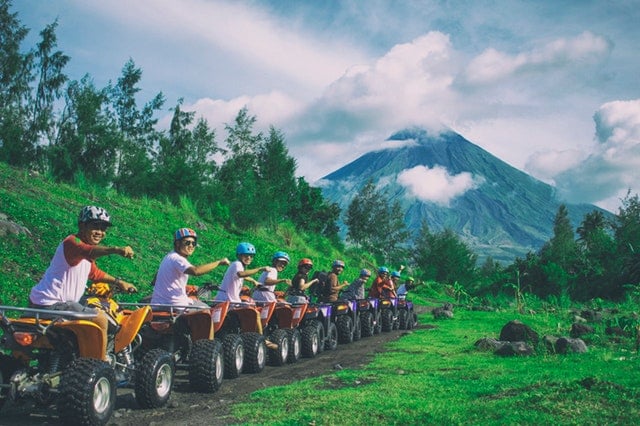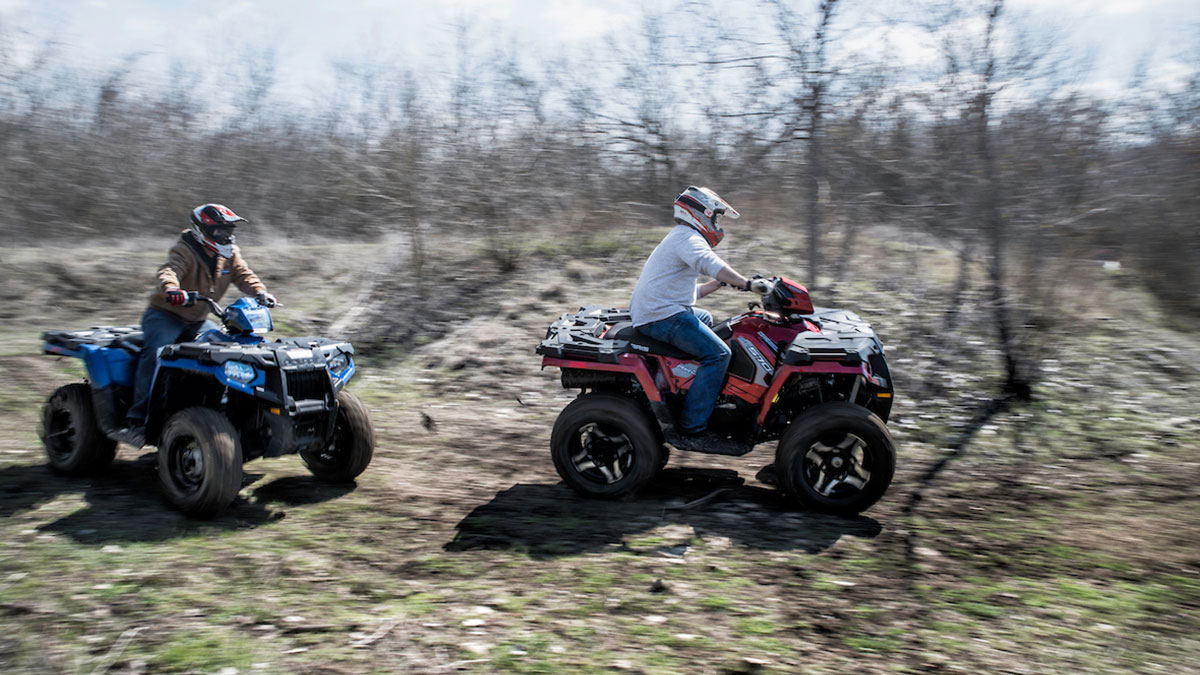Unlocking the Thrills: Grasping ATV Riding Techniques for Beginners
Unlocking the Thrills: Grasping ATV Riding Techniques for Beginners
Blog Article
ATV Riding Techniques: Understanding the Art of Off-Roading

Body Positioning
To successfully navigate through challenging off-road terrain, it is essential for ATV motorcyclists to constantly keep correct body positioning. Keeping the proper body setting while riding an ATV not only improves control and security but additionally guarantees the cyclist's security. By taking on the appropriate body placing techniques, motorcyclists can effectively disperse their weight, improve their equilibrium, and reduce the threat of injuries or crashes.
Positioning the feet on the foot fixes permits the cyclist to keep stability and control over the ATV. The biker's knees ought to be somewhat bent, providing a slight suspension to absorb shocks and keep balance.
In addition, the rider's eyes should constantly be concentrated in advance, scanning the terrain and expecting any type of obstacles or changes in the route. By preserving an ahead gaze, bikers can make instant decisions and react properly to testing surface.
Throttle Control
Structure upon the relevance of appropriate body positioning for ATV cyclists, grasping throttle control is a vital skill that allows cyclists to successfully maneuver via different off-road surfaces. Throttle control describes the ability to manage the amount of power supplied to the ATV's engine. By comprehending just how to control the throttle, cyclists can make sure a smooth and controlled acceleration, allowing them to browse obstacles with precision.
Among the essential facets of throttle control is discovering to regulate the throttle smoothly. Unexpected or jerky activities can trigger the ATV to shed traction or end up being unpredictable, making it tough to maintain control. Instead, riders need to intend for purposeful and progressive throttle inputs, especially when going across difficult surfaces. This technique permits the ATV to maintain a consistent speed and gives much better grip, minimizing the threat of accidents.
Along with smooth inflection, bikers have to likewise learn exactly how to stabilize the throttle with other riding methods, such as body positioning and stopping. When climbing steep hillsides, riders need to use enough throttle to keep momentum without creating or subduing the atv wheel spin. When descending high inclines, riders ought to utilize the throttle in combination with correct body positioning and braking to keep control and protect against the ATV from sliding or tipping over.

Braking Techniques
A crucial facet of ATV riding techniques is mastering reliable braking techniques. Recognizing how to brake correctly can make a considerable distinction in your safety and security and control over the lorry when it comes to off-roading. Among one of the most crucial braking methods is utilizing the front brake greater than the rear brake. The front brake visit here supplies most of the quiting power, so it is vital to utilize it deliberately. However, it is very important to keep in mind that rough stopping with only the front brake can trigger the ATV to pitch onward, possibly leading to loss of control and even turning over. Consequently, it is advised to apply both brakes concurrently, yet with even more stress on the front brake. An additional important strategy is to prevent locking the wheels while braking. Securing the wheels can lead to skidding, making it difficult to preserve control. To prevent this, press the brake levers gradually and launch them somewhat if you feel the wheels securing. By grasping these braking strategies, you can boost your ATV riding skills and ensure a pleasurable and safe off-roading experience.
Cornering Strategies
One crucial aspect of mastering ATV riding strategies is comprehending effective cornering strategies. Catching on an ATV can be challenging, but with the appropriate strategies, bikers can browse turns safely and successfully. The secret to successful cornering is to maintain control of the ATV while making best use of grip and lessening the risk of toppling.
To execute a correct cornering technique, riders must come close to the turn at a proper speed, guaranteeing they are not going also quick or as well slow-moving. It is critical to move the body weight in the direction of the within of the turn, leaning into it to preserve equilibrium and security. This helps to counterbalance the centrifugal pressure and maintains the ATV upright.
Additionally, motorcyclists need to keep their eyes concentrated on the departure factor of the turn instead than the immediate course ahead (ATV). This permits smoother and much more specific guiding, as it helps the rider anticipate any challenges or modifications in terrain
Moreover, correct throttle control plays a considerable function in cornering. Motorcyclists have to regulate the throttle efficiently, preventing unexpected accelerations or decelerations, which can cause loss of control.
Uphill and Downhill Riding
When navigating off-road terrain, ATV cyclists have to understand the strategies for uphill and downhill riding to keep control and ensure safety. Uphill riding requires a combination of equilibrium, throttle control, and weight circulation. As bikers ascend steep slopes, they ought to lean onward to change their weight in the direction of the front of the ATV, which boosts grip on the front wheels and protects against the vehicle from flipping backwards. ATV. Furthermore, you can look here maintaining a consistent throttle and avoiding sudden velocity or deceleration helps to stop the ATV from losing momentum or obtaining stuck. Downhill riding, on the other hand, requires riders to lean back and change their weight in the direction of the back of the ATV. This assists to maintain stability and avoid the car from flipping onward. It is essential to use the brakes moderately and use them gradually review to stay clear of securing the wheels and blowing up. Cyclists need to pick the course with the least challenges, as navigating downhill can be extra tough due to the raised speed and lowered grip. By understanding the methods for uphill and downhill riding, ATV riders can with confidence deal with various off-road terrains and enjoy a secure and thrilling experience.
Conclusion
In conclusion, grasping the art of ATV riding needs a mix of body positioning, throttle control, stopping strategies, and reliable cornering. Uphill and downhill riding also require particular skills to browse securely. By applying these techniques, bikers can boost their off-roading experience and improve their general control and security on the ATV.
ATV Riding Techniques: Understanding the Art of Off-Roading is a detailed overview that dives right into the details of mastering the skills required for off-road ATV riding. Whether you are a novice or a knowledgeable rider, ATV Riding Techniques: Mastering the Art of Off-Roading offers vital recommendations to aid boost your off-road ATV riding abilities to the following degree.

Report this page